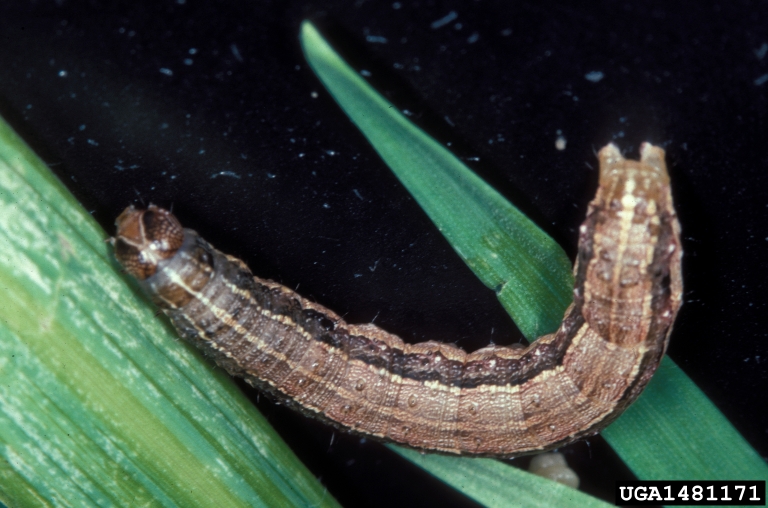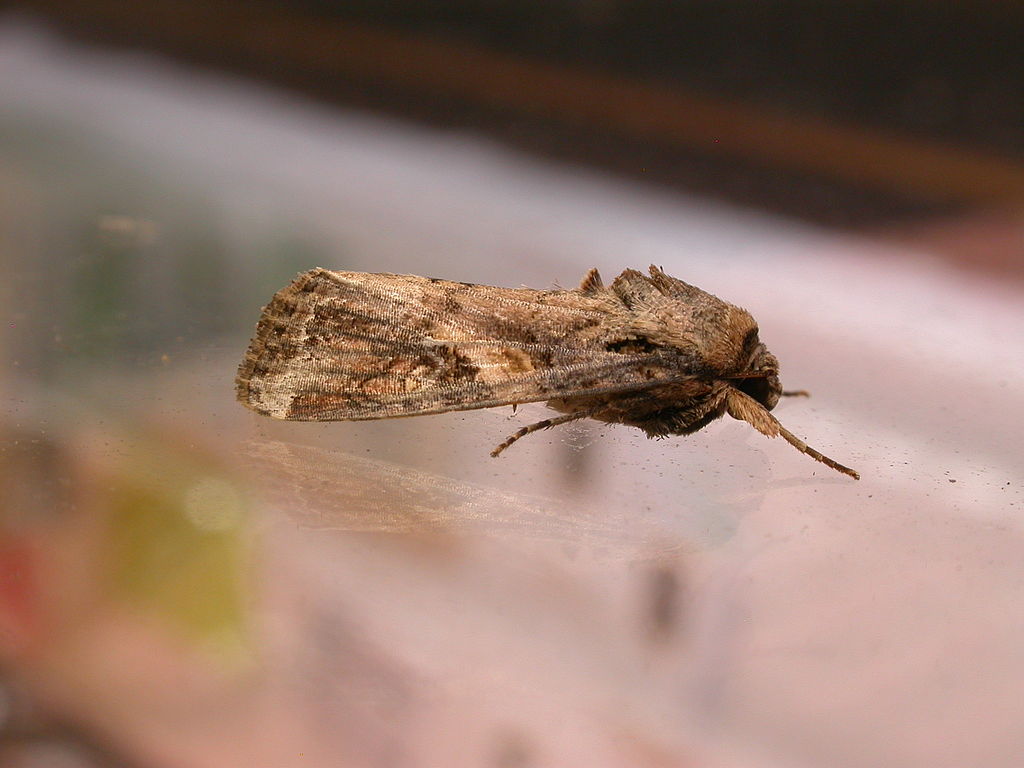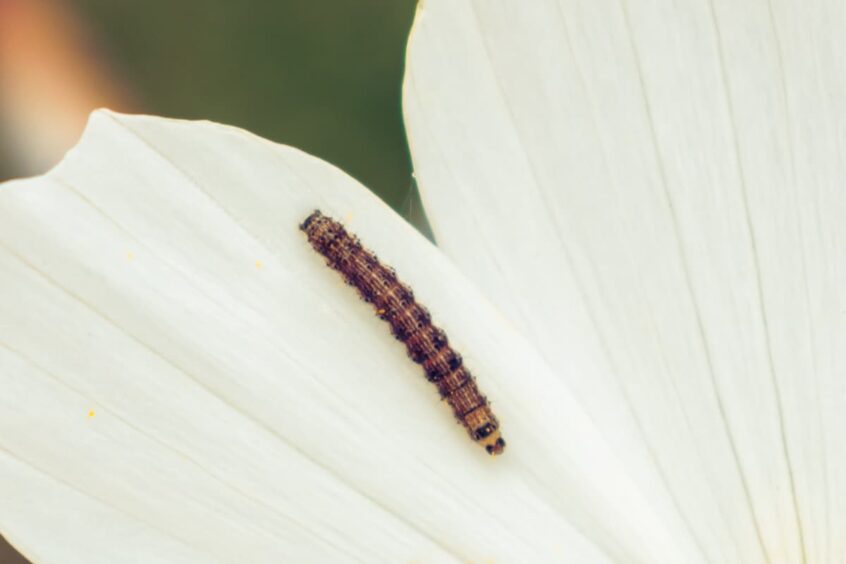What are Fall Armyworms?
Lush, green lawns are always delightful to behold. However, maintaining these healthy expanses of greenery requires diligence from the onset of selection, installation, and care, which includes dealing with an array of potential pests. One such pest that Georgia homeowners and turf managers commonly grapple with is the fall armyworm.
Armyworms are destructive pests known for their rapid defoliation of grass. They have a taste for various sod grass types that are popular in Georgia. These pests typically breed during warm seasons and can cause extensive damage in a short span of time. A rapid increase in their population combined with their voracious feeding habits have made them a perennial headache to many homeowners, causing significant damage to formerly lush, green lawns.
What makes these pests particularly tricky is their life cycle. An adult fall armyworm moth can lay up to 2,000 eggs that hatch in a few days. After hatching, the larvae feed on the leaf tissue of grass for two to three weeks, quickly turning verdant fields into patches of destroyed turf. Post feeding, the larvae then burrow into the soil to pupate. Within ten days, adult moths emerge and the life cycle begins anew. This continuous loop can lead to many generations of armyworms wreaking havoc on your lawn in a single growing season.
The damage caused by armyworms is distinctly characterized by irregular brown patches on the lawn. At first glance, these damaged areas might be mistaken for drought stress or disease. However, on a closer inspection, one would find small, light-colored larvae with a dark head. A fully grown armyworm is about 1.5 inches long, has dark and light stripes running the length of its body, and a distinct inverted Y on its head capsule, distinguishing it from other pest larvae.
Choosing the suitable sod grass in Georgia slightly reduces the chances of fall armyworm infestation. For instance, Bermuda Tifway 419 and Tahoma 31 Bermudagrass are some of the types that have shown some resilience against these pests. However, it is also essential to be aware that no grass type is entirely immune to fall armyworms. Apart from choosing the right grass, understanding the telltale signs of infestation can nip the problem in the bud, preventing any significant damage to your lawn.
While the fight against armyworm raids may seem daunting, knowledge about the enemy is the first step towards an effective management strategy. A combination of correct grass selection, regular inspection of lawns, timely identification of damage, and understanding the behavior of these pests will strengthen your position in responding to a fall armyworm attack.

Frank Peairs, Colorado State University, Bugwood.org, CC BY 3.0 US <https://creativecommons.org/licenses/by/3.0/us/deed.en>, via Wikimedia Commons
Ways to Prevent Armyworms
Armyworms are a common pest that pose a significant threat to Georgia’s lush lawns, especially during the warm months of the year. As their name suggests, these worms tend to invade in numbers, moving across your lawn like an army, leaving behind a trail of damage. Different types of sod are more or less susceptible to armyworm attacks. Understanding the inherent armyworm resistance of various sod types can help guide your grass choice, particularly if you live in an area with a history of armyworm infestations.
For preventing an armyworm invasion, the best approach integrates good lawn care practices with vigilant monitoring. The healthier your lawn is, the higher the chances it has to withstand a potential armyworm attack. Diligent sod care, including following zoysia best practices and understanding how to mow and water your lawn properly, can enhance your turf’s natural defenses and reduce its attractiveness to pests. Proper mowing height, for example, is essential as it helps increase the turf’s overall health and vigor, while also making it less appealing to armyworms.
Monitoring is another critical component of your armyworm preventative strategy. Frequent lawn inspections, particularly in the early morning or late evening when armyworms are most active, can help detect any signs of damage or the presence of these pests early on. Look out for uneven grass growth, brown patches, or visible caterpillars on the blades of grass. Early detection provides a head start in tackling the potential infestation and mitigating any extensive damage to your lush Georgia lawn.
Prevention is always better than cure, especially when it comes to protecting your lawn from armyworms. By arming yourself with knowledge and the right turf management strategies, you can maintain the health and beauty of your Georgia lawn despite the threat of these pesky pests. DIY measures can be effective to a certain extent, but for an efficient and comprehensive solution, collaborating with experts who have extensive knowledge and experience dealing with turf pests is recommended.

By Donald Hobern – Flickr: Spodoptera frugiperda, CC BY 2.0, https://commons.wikimedia.org/w/index.php?curid=14521568
How to Treat Armyworms
Identifying an infestation early is crucial to stave off severe loss. They’re pretty easy to identify: small, striped creatures inching their way across blades of grass. It’s crucial to act promptly once you notice these signs because they multiply rapidly, and a little delay might lead to a significant loss.
The first step is treating the infestation. This can be done using various insecticides designed to deliver a swift yet safe blow to these invaders. Products containing active ingredients like Bifenthrin, Cyhalothrin, or Permethrin have proven to be effective in eradicating armyworms. Acting quickly at the first sign of damage can limit the extent of the invasion and constrain the amount of repair work needed to restore your lawn. There are two main forms that these insecticides come in, granular and liquid. Both can be effective in removing armyworms while preserving your lawn’s overall health, but liquid treatments will work faster.
While treating your lawn, it’s recommended to mow it first, then water lightly, which helps bring the worms to the surface. Post-mowing, apply your insecticide as per manufacturer’s instructions. Do bear in mind that safety is paramount. Always wear gloves and protective eyewear, and keep kids and pets away during the treatment period and for a safe time afterward as recommended by the product’s instructions.
As your lawn’s natural protectors, we recommend this guide that provides comprehensive information on safe and effective ways to treat armyworms.
After dealing with the infestation and eliminating the armyworms, your lawn will need to be restored. The patches left behind by the pests need to be addressed in order to bring your lawn back to its full glory. At Legacy Turf Farms, we provide extensive guidance on how to restore your lawn. Our blog post on how to repair patches can be an excellent resource for this part of the recovery process.
While armyworm infestations can be demoralizing, it’s important to remember that your lawn can recover with the right treatment and care. Legacy Turf Farms is here to guide you through every step of the process to ensure your lawn retains its health and beauty.
